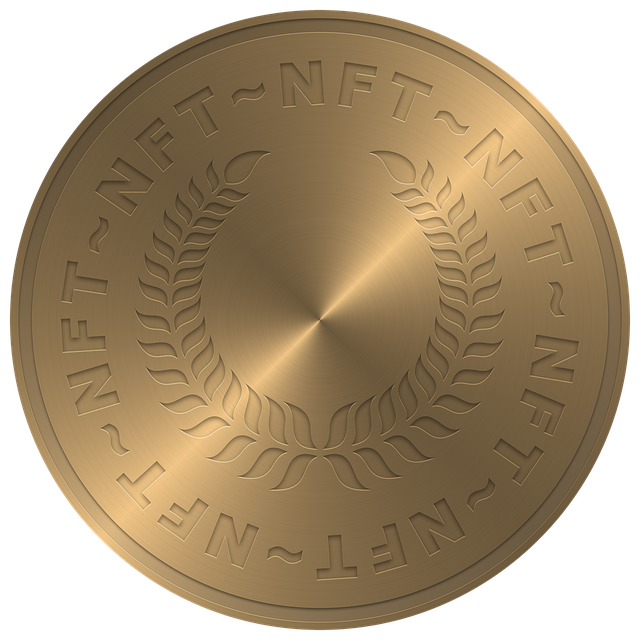What Is the Best Crypto Trading Bot for Beginners? Practical Picks and a Step-by-Step Starter Guide
Author: Jameson Richman Expert
Published On: 2025-11-13
Prepared by Jameson Richman and our team of experts with over a decade of experience in cryptocurrency and digital asset analysis. Learn more about us.
If you’re asking “what is the best crypto trading bot for beginners,” you’re not alone — automated trading is one of the fastest ways for novice traders to gain exposure to cryptocurrency markets without executing every trade manually. This comprehensive guide explains what crypto trading bots do, evaluates beginner-friendly bots, gives step-by-step setup and safety tips, and links to resources and exchanges so you can get started confidently and responsibly.

Quick summary
In this article you’ll learn: what a crypto trading bot is, the main bot types and strategies suited for beginners, detailed profiles of top beginner-friendly bots (pros, cons, pricing, exchange compatibility), how to choose the right bot, a step-by-step setup checklist (including API key safety and backtesting), risk-management and compliance tips, and actionable next steps with recommended exchange links and further reading.
What is a crypto trading bot?
A crypto trading bot is software that connects to exchanges via APIs and executes trades automatically according to pre-defined rules or algorithms. These rules can be simple (e.g., market-making or grid systems) or complex (technical indicator combinations, arbitrage, machine learning models). For an authoritative overview of algorithmic trading concepts, see the Algorithmic Trading — Wikipedia.
Why beginners consider using a crypto trading bot
- Automation: Bots remove the need to constantly monitor markets.
- Emotion reduction: They execute rules mechanically, avoiding fear and greed.
- Backtesting: Test strategies on historical data before risking capital.
- 24/7 markets: Crypto markets never sleep; bots can operate around the clock.

Types of crypto trading bots (and which are best for beginners)
Knowing the major bot types helps you pick one aligned with your risk tolerance and technical ability:
- Grid bots: Buy low and sell high between set price levels — simple and popular for beginners.
- Dollar-cost averaging (DCA) bots: Automate periodic buys to reduce timing risk.
- Trailing stop / take-profit bots: Manage exits without constant monitoring.
- Copy trading / signal bots: Follow more experienced traders or paid signals (easy but check provider credibility).
- Arbitrage bots: Exploit price differences across exchanges — technically more complex and requires more capital.
Beginner-friendly bot selection criteria
When evaluating “what is the best crypto trading bot for beginners,” consider these practical criteria:
- Ease of use: Intuitive UI, templates, pre-built strategies.
- Backtesting and paper trading: Ability to test strategies risk-free.
- Cost and pricing model: Subscription vs. commission vs. free built-in bots.
- Exchange support: Compatibility with major exchanges you trust (Binance, Bybit, Bitget, MEXC, etc.).
- Security: No withdrawals via API, strong reputation, clear privacy/security practices.
- Community and documentation: Tutorials, active community, customer support.
Top crypto trading bots for beginners (practical picks)
Below are widely used bots and platforms that balance usability, features, and safety for beginners. This is not investment advice; evaluate each product and test with small amounts.
1. Pionex — built-in exchange bots
Pionex is an exchange with free built-in trading bots (grid, DCA, Martingale variants). Because bots run on the exchange itself, there’s no third-party API sharing and setup is straightforward. For beginners who want a low-friction start, this is attractive.
- Pros: Free bots, easy setup, low fees, no external API keys needed.
- Cons: You must use Pionex exchange; limited advanced customization.
- Best for: Beginners wanting one-click setups and minimal technical overhead.
2. 3Commas — template-driven bot marketplace
3Commas is a popular cloud-based bot platform with templates, smart trading terminals, and copy-trade marketplaces. It supports most major exchanges and offers backtesting and paper trading.
- Pros: Clean UI, cross-exchange support, strategy marketplace, paper trading.
- Cons: Subscription fee for full features; can be overwhelming to new users without guided tutorials.
- Best for: Beginners who plan to scale and want cross-exchange capability (Binance, Bybit, Bitget, etc.).
3. Coinrule — rules-based strategy builder
Coinrule allows non-coders to create rule-driven strategies with an intuitive “if-this-then-that” builder and many templates for beginners.
- Pros: No coding required, strong template library, good educational content.
- Cons: Free plan limited; advanced rules behind paid tiers.
- Best for: Beginners who want to customize strategies without writing code.
4. Bitsgap — grid and arbitrage tools
Bitsgap offers grid bots, portfolio management, and demo trading with cross-exchange features. It’s more advanced but useful for structured grid strategies.
- Pros: Unified interface for many exchanges, backtesting, demo mode.
- Cons: Paid plans required for more advanced features; learning curve for cross-exchange setups.
- Best for: Beginners ready to experiment with grid strategies across exchanges.
5. Zignaly — copy trading and signal integrations
Zignaly focuses on copy trading and connecting to third-party signal providers, plus it supports simple bots for DCA and grid strategies.
- Pros: Easy copy trading, integration with TradingView signals.
- Cons: Quality depends on chosen signal providers; needs research.
- Best for: Beginners who prefer following vetted traders rather than building strategies from scratch.
6. Coinigy / Quadency / other platforms
There are several multi-exchange platforms (Coinigy, Quadency) that offer trading terminals, automation, and portfolio analytics. They are good if you want unified multi-exchange control but may be pricier.

How to evaluate exchanges and sign up safely
Most bots require API access to exchanges. Start with reputable centralized exchanges that support API trading and strong security. Here are starter links to commonly used exchanges (use them only after you do your own checks):
- Register on Binance — one of the largest global exchanges with extensive API documentation.
- Register on MEXC — supports many altcoins and active markets.
- Register on Bitget — useful for copy trading and derivatives.
- Register on Bybit — strong derivatives and spot trading platform.
If you’re trading or testing region-specific guides, these articles can help: a practical Bybit Bitcoin trading guide for Nigeria, a general Bybit spot trading platform guide, and an article explaining how to get free crypto signups like on Coinbase: Coinbase free crypto guide.
Step-by-step: Setting up your first bot (beginner-friendly example)
This example walks you through setting up a grid or DCA bot on a platform like 3Commas, Coinrule, or Pionex.
- Choose exchange and bot platform: Create accounts on both the exchange (e.g., Binance, Bybit) and the bot platform (or use an exchange with built-in bots like Pionex).
- Complete KYC and enable 2FA: Secure accounts with strong passwords and two-factor authentication.
- Create API keys: On your exchange, create an API key for the bot. Only enable trading (disable withdrawal permission). Note your API key and secret securely.
- Connect API to the bot platform: Paste API details into the bot platform’s connection page. Confirm read/trade-only permissions.
- Pick a strategy template: Use a beginner-friendly template — Grid or DCA. Many platforms have pre-configured templates tailored to low-maintenance trading.
- Backtest and paper trade: Run backtests on historical data and use the platform’s paper trading mode to validate performance without risking capital.
- Start small: Deploy the bot with a small allocation to monitor performance and behavior live.
- Monitor and adjust: Check daily/weekly performance and tweak parameters gradually based on live results and backtest insights.
Safety checklist for API and bot use
- Never give an API key withdrawal permission. Only enable trading and read access.
- Use separate API keys per bot and revoke unused keys immediately.
- Keep minimal capital on exchange while you’re testing. Store long-term holdings offline (hardware wallet).
- Use strong, unique passwords and 2FA (preferably hardware or authenticator app).
- Regularly update platform credentials and monitor account activity for anomalies.

Backtesting and paper trading — why they matter
Backtesting runs your strategy on historical price data and helps you assess metrics like drawdown, win rate, and profit factor. Paper trading runs the bot live with simulated orders. Both reduce the learning curve and help avoid costly mistakes. Use built-in backtesting tools on platforms or export sample data to test locally.
Common beginner mistakes and how to avoid them
- Overleveraging: Avoid margin and high-leverage strategies until you fully understand them.
- Relying on unverified signals: If using copy trading or signal services, vet the provider and review historical performance.
- Skipping backtesting: Always backtest and paper trade before using real funds.
- Poor risk management: Use stop-loss, position sizing rules, and diversification.
- Ignoring exchange fees: Fees can erode small-margin strategies like grid trading — factor them into settings.
Practical example strategies for beginners
Here are two low-complexity strategies suitable for beginners to test via bots:
1. Grid trading (example)
Grid trading places buy and sell orders at predefined intervals between a lower and upper price range. It profits from normal price oscillations.
- Set lower price: recent support level.
- Set upper price: recent resistance.
- Choose number of grid levels and per-order allocation.
- Monitor and narrow/widen the grid as market volatility changes.
2. Dollar-cost averaging (DCA) with stop-loss
DCA automates periodic buys (daily/weekly). Pair it with a safety stop-loss (or hedging rules) to protect against unexpected downtrends.

Costs and pricing models
Bot platforms follow several pricing approaches:
- Free built-in bots: Found on exchanges like Pionex (no extra bot subscription).
- Subscription: Monthly fee (e.g., 3Commas, Bitsgap) — often tiered by feature set.
- Performance fee / commission: Some copy-trading providers take a cut of profits.
- One-time license: Less common, sometimes used by downloadable software.
Factor the bot cost and exchange trading fees into expected returns when backtesting.
Legal and tax considerations
Automated trading does not change your regulatory obligations. Taxation of crypto trading varies by jurisdiction. Keep detailed transaction records and consult local tax authorities or a tax professional. For official guidance, review your country’s tax authority website or general investor protection guidance like the SEC investor alerts on cryptocurrencies (U.S. example).
Further learning and reading
To deepen your understanding, read credible resources about trading, risk management, and crypto markets:
- Trading bot — Wikipedia (concept overview)
- Investopedia: Algorithmic Trading (practical trading concepts)
- Crypto market analysis and price outlooks: for example, consider following market commentaries like this Bitcoin price prediction and outlook to understand macro drivers when designing bot strategies.

Practical next steps (action plan for beginners)
- Open an account on a reputable exchange (register links above) and complete KYC.
- Start with paper trading on a bot platform or use built-in demo bots.
- Run conservative backtests on grid or DCA strategies with realistic fee assumptions.
- Deploy a small live allocation and monitor closely for 2–4 weeks.
- Iterate: tweak grid spacing, DCA frequency, and stop-loss rules based on real-world behavior.
When to consider moving beyond beginner bots
Once you’re comfortable, consider more advanced tactics like multi-exchange arbitrage, custom-coded strategies, or integrating TradingView signals. Always increase capital exposure gradually and maintain robust logging for performance review.
Useful platform guides and region-specific help
If you’re using Bybit as your exchange or are region-specific (for example, Nigeria), these guides are practical and actionable:
- How to trade Bitcoin on Bybit in Nigeria — step-by-step
- Bybit spot trading platform guide
- If you’re exploring free onboarding bonuses and learning offers, see this guide on how to get free crypto on Coinbase.

FAQs — short answers to common questions
Q: Are crypto trading bots legal?
A: In most jurisdictions, yes — but exchanges may have their own rules and some regions restrict automated strategies. Ensure compliance with exchange TOS and local laws.
Q: Can bots make you rich quickly?
A: No guaranteed riches. Bots automate strategies but cannot eliminate market risk. Use realistic expectations, proper risk management, and small allocations while testing.
Q: Do I need to code to use a bot?
A: Not necessarily. Many beginner-focused platforms (Coinrule, Pionex, 3Commas templates) let you create and run strategies without coding.
Conclusion — what is the best crypto trading bot for beginners?
There is no single “best” crypto trading bot for beginners — the right choice depends on your goals, technical comfort, and the exchanges you use. For absolute beginners seeking simplicity, exchange-integrated bots like Pionex offer an easy entry point. If you want cross-exchange flexibility and growth potential, platforms like 3Commas, Coinrule, and Bitsgap provide templates, backtesting, and paper trading that are well-suited for learning. Always prioritize security (trade-only API keys), backtest before going live, start with small capital, and document performance.
Ready to start? Create accounts on trusted exchanges via these links: Binance, MEXC, Bitget, or Bybit. If you want ongoing market context while designing strategies, read market outlooks such as this Bitcoin price prediction and driver analysis.
Use the guidance in this article to choose a bot that matches your skills, test strategies thoroughly, manage risk responsibly, and keep learning. If you’d like, tell me which exchanges or bot platforms you’re considering and I’ll recommend a customized starter configuration and parameter suggestions.